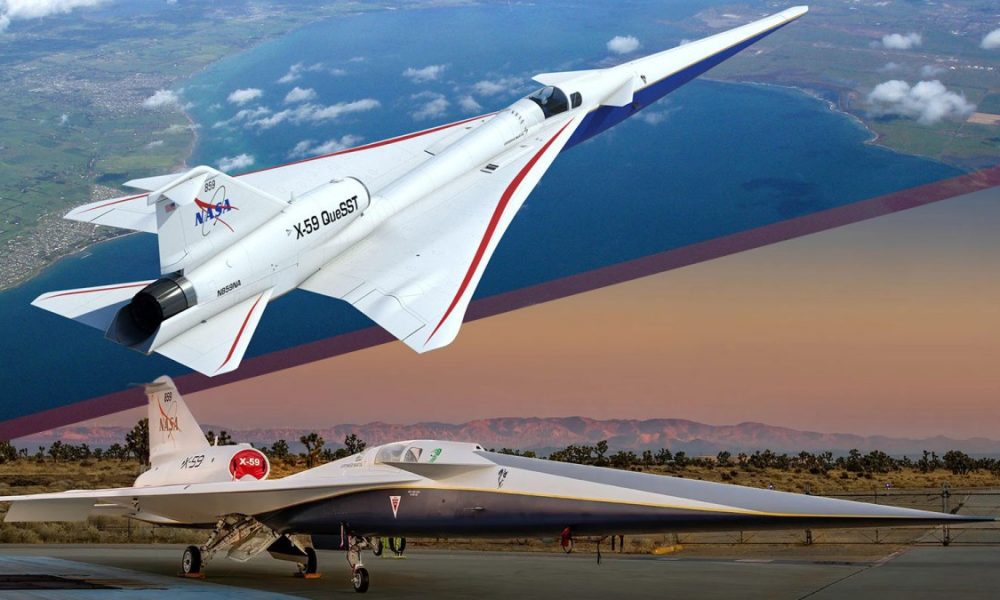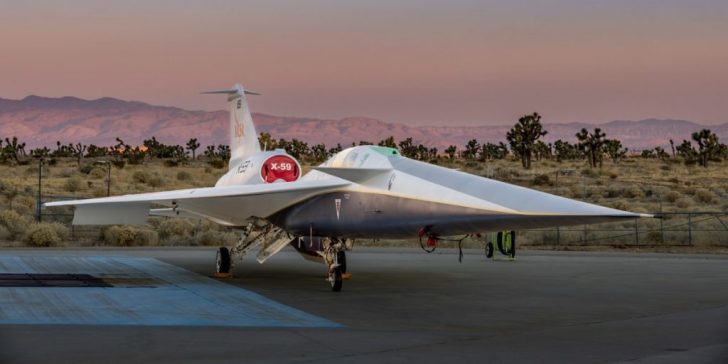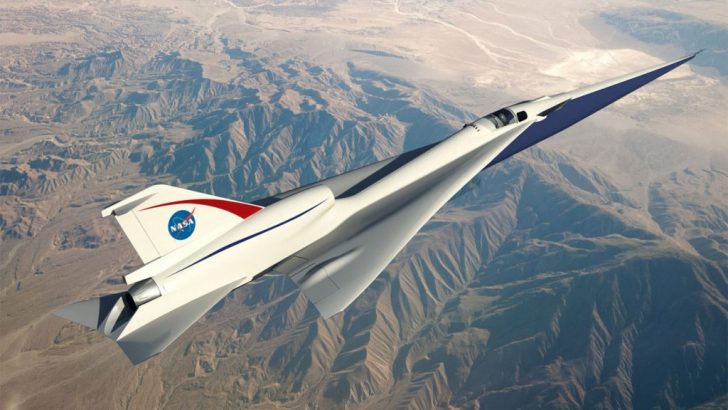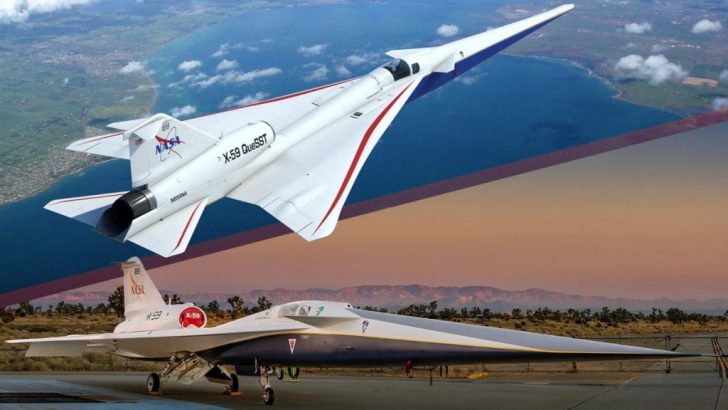
A Peek Inside NASA’s Latest Supersonic Aircraft, the X-59

In the annals of aviation, breaking the sound barrier has always been a loud affair. But NASA, in partnership with Lockheed Martin, is rewriting this narrative with the X-59 aircraft. This marvel of engineering is designed to transform the disruptive sonic boom associated with supersonic travel into what NASA terms a “sonic thump.”

E News / According to early reports, the goal of the X-59 is to make supersonic flights over land a quiet reality, overturning current bans due to noise pollution.
The X-59: A Glimpse of the Future
Unveiled on January 12, the X-59 stands as a testament to human ingenuity and the relentless pursuit of advancement. NASA’s vision is clear: use this exceptional aircraft to collect invaluable data and set the stage for the next generation of commercial supersonic aircraft. With its first flight scheduled for later this year, the X-59 is not just a plane. It is a harbinger of a faster, quieter future in air travel.
Since 2016, the X-59 has been more than just a concept. It is a painstakingly crafted reality. At nearly 100 feet long, its elongated structure is no mere design quirk. This shape is pivotal in preventing the merging of shock waves created during supersonic flight, effectively reducing their intensity. With a top speed of 925 mph (Mach 1.4), the X-59 does not just promise speed. It assures minimal acoustic impact.
The Sound of Silence: Testing the Sonic Thump
NASA’s approach to introducing the X-59 is as meticulous as its design. Before it graces the skies, it must undergo rigorous integrated systems testing, engine runs, and taxi tests. The true test, however, lies in public perception.

The Talks / NASA aims to gauge the ground-level reaction to the X-59’s “sonic thump” compared to the traditional sonic boom.
If the public finds the noise levels tolerable, this could be a game-changer, influencing regulators to reconsider the ban on supersonic flights over land.
The X-59 is a key player in NASA’s Quiet Supersonic Transport (Quesst) mission. This initiative is not just about building a faster aircraft. It is about redefining the relationship between speed and sound in aviation. The mission is ambitious, aiming to marry high-speed travel with environmental and societal harmony.
Engineering Marvels: Inside the X-59
The X-59 is a showcase of modern aerospace engineering. Every component, from its bespoke engines to the uniquely designed fuselage, is a testament to innovation. Its shape, geared towards minimizing noise, also presents unique challenges in terms of stability and control. NASA and Lockheed Martin have tackled these with advanced technology and ingenious design solutions.

GTN / As a showcase of modern aerospace engineering, NASA’s latest X-59 is a testament to innovation.
The implications of the X-59’s success are far-reaching. Imagine flying from New York to Los Angeles in half the time, without the accompanying sonic disturbance. The X-59 is not just an aircraft. It is a potential catalyst for a revolution in air travel. Faster flights could become the norm, bringing distant corners of the world closer together, all while respecting the tranquility of those on the ground.
A Quiet Revolution in the Skies
The X-59 is more than a feat of aerospace engineering. It is a vision of a future where speed and silence coexist. As NASA prepares for its maiden flight later this year, the world watches with bated breath. Will the X-59 be the key to unlocking a new era of supersonic travel? Only time, and the sound of its sonic thump, will tell. In the meantime, we can all dream of a future where the sky is not just the limit, but also a quiet expanse awaiting our exploration.
More in Tech
-
`
5 Savings Accounts That Will Earn You the Most Money in 2024
In 2024, choosing the right savings account is more critical than ever. With the array of options available, knowing which savings...
June 5, 2024 -
`
The Complete Relationship Timeline of Taylor Swift & Travis Kelce
When you think of unlikely couples, Taylor Swift and Travis Kelce might not be the first pair that comes to mind....
May 29, 2024 -
`
What is Business Administration and What Opportunities Does it Offer?
In today’s bustling world of commerce and industry, the term “business administration” often looms large, yet its true essence remains shrouded...
May 22, 2024 -
`
What is AI? Exploring the World of Artificial Intelligence
In today’s rapidly evolving technological landscape, the term “Artificial Intelligence” (AI) has become a buzzword that sparks curiosity, speculation, and even...
May 16, 2024 -
`
How Many Jobs Are Available in Real Estate Investment Trusts? Exploring Career Opportunities
Are you seeking a career path with a blend of financial savvy and a knack for the real estate market? Look...
May 9, 2024 -
`
The Staggering Net Worth of the Richest Podcaster Joe Rogan in 2024
Joe Rogan has become a household name, largely due to his immensely popular podcast, “The Joe Rogan Experience.” With a blend...
April 29, 2024 -
`
What Are Routing Numbers & Do Credit Cards Have One?
When managing your finances, understanding the various numbers and terms associated with your bank accounts and credit cards is crucial. A...
April 24, 2024 -
`
Tesla Stock: Let’s Address the Elephant in the Room
Why is Tesla stock dropping? This is the million-dollar question that has been on the minds of investors and enthusiasts alike...
April 16, 2024 -
`
Bearer Bonds: Definition, How They Work & Are They Valuable?
Bearer bonds are unique securities that have a colorful history and a distinctive way of functioning that sets them apart from...
April 10, 2024















You must be logged in to post a comment Login